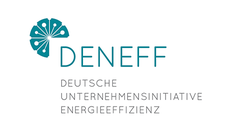Search eceee proceedings
Obstacles and suggestions of external waste heat projects
Panel: 5. Business models, finance and investment in the age of digitalisation
Author:
Reemt Heuke, Deutsche Energie-Agentur (Dena)
Abstract
In Germany, there are enormous energy efficiency potentials for industrial waste heat use. To reach these potentials, dena is supporting fifteen flagship projects in this field. Four of these projects are using waste heat to heat buildings in an external service area. The experiences of the dena-project show that the following issues can be obstacles to realize external waste heat projects:
1 Several subsidy programmes
2 Case of different primary energy factors
3 Displacement of baseload heat supply
Several subsidy programmes: There are several subsidy programmes supporting external waste heat projects with different conditions and levels of investment grants. This put companies in a complex situation (e.g. analysing whether and how these subsidy programmes can be combined). Another complicating issue for new heating networks is that not all relevant components (like peak load supply) are included in the KfW waste heat programme, which is on the financial side attractive. Waste heat of industrial processes is not generated in such a way to fit the heat profile of consumers. Moreover, industrial plants regularly shut down processes for maintenance purposes. As a consequence, a redundant heat and peak load supply in the heating network must be constructed. Moreover, further subsidy programmes might be needed for financial feasibility of the project. Such a matter should be discussed in an early planning and negotiation stage of the project with all relevant stakeholders.
Case of different primary energy factors: A low primary energy factor of a heating network is a good selling argument for heat providers, since homeowners purchasing heat with a low primary energy factor can fulfil requirements of the energy saving ordinance. Using waste heat in a heating network leads to a lower primary energy factor, since emissions are attributed to the industrial processes. However, in some particular cases, companies may fear implementing waste heat projects will lead to a higher primary energy factor. For example, in a city with two separate heating networks, the smaller heating network has the requirement not to exceed a certain low emission factor. The larger heating network uses coal and has a higher primary energy factor. To use waste heat in the larger heating network, a connection of both networks would be necessary (direct connection would lead to higher investment costs). A simple connection (hydraulic coupling) would lead to a common primary energy factor, whereby the smaller heating network will not fulfil its obligations anymore. A hydraulic separation enables to have two separate energy factors. The above mentioned points lead to the question, whether changes in the existing regulation are needed or whether even a system based on emission intensities is more constructive.
Displacement of baseload heat supply: Generally baseload supply in heating networks is an attractive business. However, even for energy sources with low costs and low emissions like waste heat, it is difficult to gain market shares, since CHP, waste incineration plants or solid fuels (often used to supply baseload) are available at low costs. This competition leads to lower usage possibilities of waste heat. In a flagship project, a CHP plant is used for baseload and has a long term contract for biogas delivery. To realize the external waste heat project, the CHP will be used more flexible in the future (according to market prices), after the end of the long term contract with the biogas supplier. However, solid fuels are cheap and may lead to lower economics of such projects. Additional measures, like a CO2-price, might be needed to increase attractiveness of external waste heat projects.
Conclusion: On the one hand waste heat projects have an enormous potential in terms of energy efficiency, on the other hand there are several obstacles for such projects. Moreover, there are very attractive financial conditions for realizing these projects at the moment.
Downloads
Download this presentation as pdf: 5_133_18_Jager_pres.pdf















